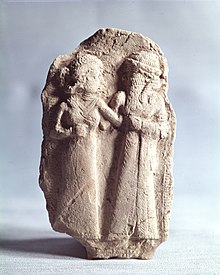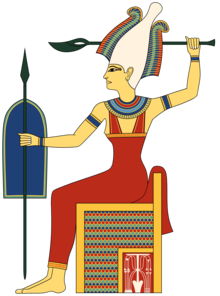Portal:Phoenicia/Sandbox
https://en.wikipedia.org/wiki/Portal:Phoenicia/Sandbox
THE PHOENICIA PORTAL

Phoenicia (/fəˈnɪʃə, fəˈniːʃə/), or Phœnicia, was an ancient Semitic thalassocratic civilization originating in the coastal strip of the Levant region of the eastern Mediterranean, primarily located in modern Lebanon. The territory of the Phoenicians expanded and contracted throughout history, with the core of their culture stretching from Arwad in modern Syria to Mount Carmel in modern Israel covering the entire coast of modern Lebanon. Beyond their homeland, the Phoenicians extended through trade and colonization throughout the Mediterranean, from Cyprus to the Iberian Peninsula.
The Phoenicians directly succeeded the Bronze Age Canaanites, continuing their cultural traditions following the decline of most major cultures in the Late Bronze Age collapse and into the Iron Age without interruption. It is believed that they self-identified as Canaanites and referred to their land as Canaan, indicating a continuous cultural and geographical association. The name Phoenicia is an ancient Greek exonym that did not correspond precisely to a cohesive culture or society as it would have been understood natively. Therefore, the division between Canaanites and Phoenicians around 1200 BC is regarded as a modern and artificial division.
The Phoenicians, known for their prowess in trade, seafaring and navigation, dominated commerce across classical antiquity and developed an expansive maritime trade network lasting over a millennium. This network facilitated cultural exchanges among major cradles of civilization like Greece, Egypt, and Mesopotamia. The Phoenicians established colonies and trading posts across the Mediterranean; Carthage, a settlement in northwest Africa, became a major civilization in its own right in the seventh century BC.
The Phoenicians were organized in city-states, similar to those of ancient Greece, of which the most notable were Tyre, Sidon, and Byblos. Each city-state was politically independent, and there is no evidence the Phoenicians viewed themselves as a single nationality. While most city-states were governed by some form of kingship, merchant families likely exercised influence through oligarchies. After reaching its zenith in the ninth century BC, the Phoenician civilization in the eastern Mediterranean gradually declined due to external influences and conquests. Yet, their presence persisted in the central and western Mediterranean until the destruction of Carthage in the mid-second century BC. — Read more about Phoenicia, its mythology and languagehttps://en.wikipedia.org/w/index.php?title=Portal:Phoenicia/Sandbox&action=edit
Read or find an article
The Readers' FAQ and our about page contain the most commonly sought information about Wikipedia.
For simple searches, there is a search box at the top of every page. Type what you are looking for in the box. Partial matches will appear in a dropdown list. Select any page in the list to go to that page. Or, select the magnifying glass "Go" button, or press ↵ Enter, to go to a full search result. For advanced searches, see Help:Searching.
There are other ways to browse and explore Wikipedia articles; many can be found at Wikipedia:Contents. Also see our disclaimer for cautions about Wikipedia's limitations.
Edit an article
Contributing is easy: see how to edit a page. For a quick summary on participating, see contributing to Wikipedia, and for a friendly tutorial, see our introduction. For a listing of introductions and tutorials by topic, see getting started. The Simplified Manual of Style and Cheatsheet can remind you of basic wiki markup.
Be bold in improving articles! When adding facts, please provide references so others may verify them. If you are affiliated with the article subject, please see our conflict of interest guideline.
The simple guide to vandalism cleanup can help you undo malicious edits.
If you're looking for places you can help out, the Task Center is the place to go, or check out what else is happening at the community portal. You can practice editing and experiment in a sandboxyour sandbox.
,
 Featured article
-
Featured article
-
This is a Featured article, which represents some of the best content on English Wikipedia..
The Battle of the Aegates was a naval battle fought on 10 March 241 BC between the fleets of Carthage and Rome during the First Punic War. It took place among the Aegates Islands, off the western coast of the island of Sicily. The Carthaginians were commanded by Hanno, and the Romans were under the overall authority of Gaius Lutatius Catulus, but Quintus Valerius Falto commanded during the battle. It was the final and deciding battle of the 23-year-long First Punic War.
The Roman army had been blockading the Carthaginians in their last strongholds on the west coast of Sicily for several years. Almost bankrupt, the Romans borrowed money to build a naval fleet, which they used to extend the blockade to the sea. The Carthaginians assembled a larger fleet which they intended to use to run supplies into Sicily. It would then embark much of the Carthaginian army stationed there as marines. It was intercepted by the Roman fleet and in a hard-fought battle, the better-trained Romans defeated the undermanned and ill-trained Carthaginian fleet, which was further handicapped by being laden with supplies and having not yet embarked its full complement of marines. (Full article...) Good article
-
Good article
-
This is a Good article, an article that meets a core set of high editorial standards.
Dumuzid or Dumuzi or Tammuz (Sumerian: 𒌉𒍣, romanized: Dumuzid; Akkadian: Duʾūzu, Dûzu; Hebrew: תַּמּוּז, romanized: Tammūz), known to the Sumerians as Dumuzid the Shepherd (Sumerian: 𒌉𒍣𒉺𒇻, romanized: Dumuzid sipad) and to the Canaanites as Adon (Phoenician: 𐤀𐤃𐤍; Proto-Hebrew: 𐤀𐤃𐤍), is an ancient Mesopotamian and associated with agriculture and shepherds, who was also the first and primary consort of the goddess Inanna (later known as Ishtar). In Sumerian mythology, Dumuzid's sister was Geshtinanna, the goddess of agriculture, fertility, and dream interpretation. In the Sumerian King List, Dumuzid is listed as an antediluvian king of the city of Bad-tibira and also an early king of the city of Uruk.
In Inanna's Descent into the Underworld, Inanna perceives that Dumuzid has failed to properly mourn her death and, when she returns from the Underworld, allows the galla demons to drag him down to the Underworld as her replacement. Inanna later regrets this decision and decrees that Dumuzid will spend half of the year in the Underworld, but the other half of the year with her, while his sister Geshtinanna stays in the Underworld in his place, thus resulting in the cycle of the seasons. In the Sumerian poem Inanna Prefers the Farmer, Dumuzid competes against the farmer Enkimdu for Inanna's hand in marriage. (Full article...)Selected Phoenician inscriptions and language articles -
The Yehawmilk stele, de Clercq stele, or Byblos stele, also known as KAI 10 and CIS I 1, is a Phoenician inscription from c.450 BC found in Byblos at the end of Ernest Renan's Mission de Phénicie. Yehawmilk (Phoenician 𐤉𐤇𐤅𐤌𐤋𐤊 ), king of Byblos, dedicated the stele to the city’s protective goddess Ba'alat Gebal.
It was first published in full by Melchior de Vogüé in 1875. In the early 1930s, the bottom right corner of the stele was discovered by Maurice Dunand. The main part of the stele is in the Louvre, whilst the bottom right part is in the storerooms of the National Museum of Beirut and has never been on public display. (Full article...)Selected Phoenician mythology articles -
Anat (/ˈɑːnɑːt/, /ˈænæt/), Anatu, classically Anath (/ˈeɪnəθ, ˈeɪˌnæθ/; Ugaritic: 𐎓𐎐𐎚 ʿnt; Hebrew: עֲנָת ʿĂnāṯ; Phoenician: 𐤏𐤍𐤕, romanized: ʿNT; Greek: Αναθ, romanized: Anath; Egyptian: ꜥntjt) was a goddess associated with warfare and hunting, best known from the Ugaritic texts. Most researchers assume that she originated in the Amorite culture of Bronze Age upper Mesopotamia, and that the goddess Ḫanat, attested in the texts from Mari and worshiped in a city sharing her name located in Suhum, should be considered her forerunner.
In Ugarit, Anat was one of the main goddesses, and regularly received offerings, as attested in texts written both in the local Ugaritic language and in Hurrian. She also frequently appears in myths, including the Baal Cycle and the Epic of Aqhat. In the former, she is portrayed as a staunch ally of the weather god Baal, who assists him in his struggle for kingship, helps him with obtaining the permission to obtain a dwelling of his own, and finally mourns and avenges his death at the hands of the personified death, Mot. The precise nature of the relation between Anat and Baal is uncertain, and the conventional views that they were lovers, siblings or both remain a matter of dispute among researchers. Another deity who frequently appears alongside her is Ashtart. Interactions between Anat and the sun goddess Shapash and moon god Yarikh are described in myths as well. In Hurrian ritual texts, she appears alongside deities such as Šimige, Aštabi and Nupatik. Elsewhere in the Levant and in nearby regions of inland Syria, Anat's status apparently was not equally high, though she is nonetheless attested in Emar, Hazor and elsewhere. (Full article...)General images
Categories
Related portals
Wikiproject
Other Wikimedia and Wikiportals
The following Wikimedia Foundation sister projects provide more on this subject:
-
Commons
Free media repository -
Wikibooks
Free textbooks and manuals -
Wikidata
Free knowledge base -
Wikinews
Free-content news -
Wikiquote
Collection of quotations -
Wikisource
Free-content library -
Wikiversity
Free learning tools -
Wikivoyage
Free travel guide -
Wiktionary
Dictionary and thesaurus
Parent portal: Lebanon














































